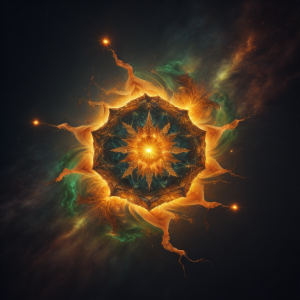
In the vast expanse of the night sky, few stars capture our imagination quite like Betelgeuse. This red supergiant, situated in the Orion constellation, has long fascinated astronomers and stargazers alike. Its colossal size and unpredictable behavior have sparked speculation about the possibility of a supernova event. In this article, we delve into the intriguing world of Betelgeuse, examining whether it is poised to unleash a spectacular explosion that will illuminate the heavens.
Betelgeuse, also known as Alpha Orionis, is one of the largest known stars in our galaxy. It boasts a diameter roughly 1,000 times that of our Sun and shines with a radiant red hue. Its distinctive appearance has earned it the nickname "the red supergiant."
One of the main reasons Betelgeuse has garnered attention is its status as a prime candidate for a supernova event. A supernova occurs when a massive star reaches the end of its life cycle and undergoes a catastrophic explosion. This cosmic spectacle releases an enormous amount of energy, briefly outshining entire galaxies.
Despite its colossal size, Betelgeuse is relatively close to Earth, located approximately 700 light-years away. This proximity allows scientists to study its behavior and monitor any signs of an imminent supernova.
In late 2019 and early 2020, Betelgeuse surprised astronomers with an unprecedented dimming event. Its brightness dropped to around 40% of its usual luminosity, prompting speculation that a supernova might be imminent. However, subsequent observations revealed that the dimming was likely caused by a combination of stellar activity and dust clouds obscuring our view.
Betelgeuse's evolution is a complex process driven by the depletion of its nuclear fuel. As a red supergiant, it burns through its hydrogen fuel at an astonishing rate. Once the hydrogen is depleted, it enters the later stages of its life, where heavier elements such as helium and carbon fuel the fusion process.
Predicting the precise timing of a supernova is a daunting task. While Betelgeuse is certainly nearing the end of its life, scientists cannot determine with certainty when the final cataclysmic event will occur. It could be thousands of years from now or perhaps just a few hundred. Nevertheless, the proximity of Betelgeuse makes it an ideal candidate for intensive study and observation.
If Betelgeuse were to go supernova, it would be a truly awe-inspiring sight. For a brief period, it would outshine the Moon and become visible even during daylight hours. The explosion would release an extraordinary amount of energy, producing shockwaves and triggering the formation of heavy elements through nucleosynthesis.
However, the effects on Earth would be minimal due to Betelgeuse's considerable distance. The resulting radiation and high-energy particles would likely be absorbed by our atmosphere, posing no direct threat to life on our planet.

